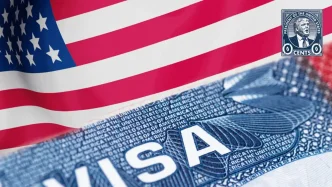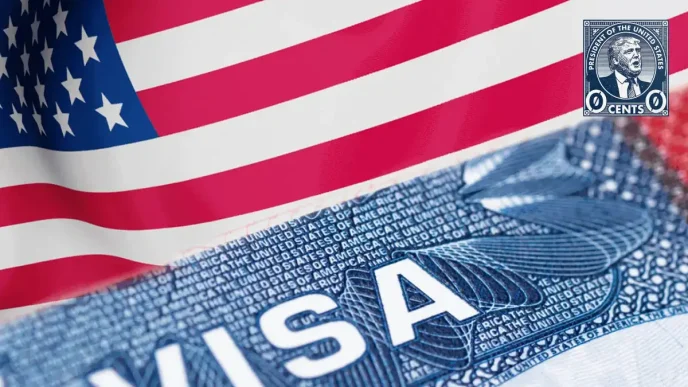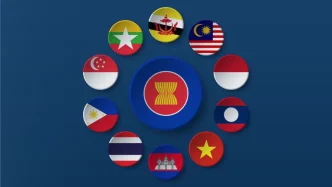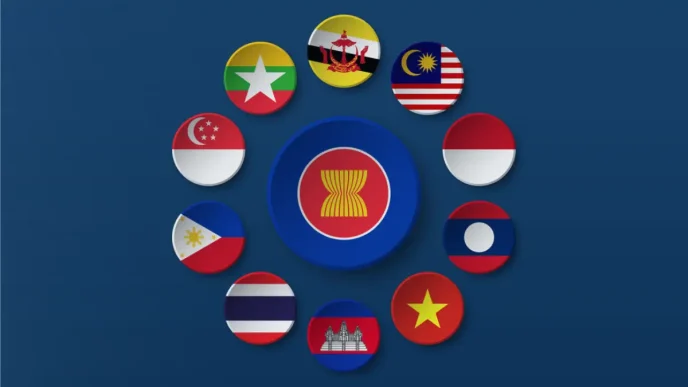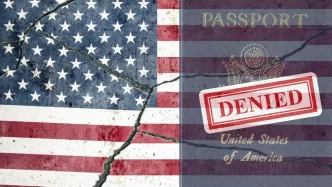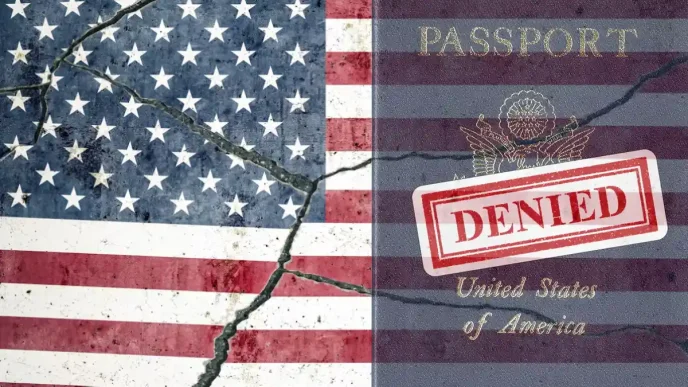A Chinese Coast Guard ship was recently observed sailing just 60 nautical miles (111 kilometres) west of Luzon, the main island of the Philippines, in a move that has reignited concerns over Beijing’s assertive posture in the disputed South China Sea. The sighting, captured in a handout photo released by the Philippine Coast Guard (PCG) on 12 January 2025, showed the vessel being monitored by the PCG’s BRP Teresa Magbanua. This incident, coupled with the reported transit of one of China’s largest fisheries research ships, the Lan Hai 101, through Philippine archipelagic waters, underscores the ongoing maritime tensions between Manila and Beijing.
The South China Sea, a critical global trade route and a region rich in natural resources, remains a flashpoint for geopolitical rivalry. Beijing claims sovereignty over nearly the entire area, including parts of the West Philippine Sea within Manila’s exclusive economic zone (EEZ), despite a 2016 arbitral ruling that rejected China’s expansive claims in favour of the Philippines. The continued presence of Chinese vessels in these contested waters has heightened fears of escalation, with implications for regional stability and international maritime law.
Chinese Vessels in Focus
The sighting of the Chinese Coast Guard ship near Luzon on 11 January 2025 is the latest in a series of encounters that have strained relations between the two nations. While the purpose of the vessel’s presence remains unclear, its proximity to Philippine territory—well within the country’s EEZ—has raised questions about Beijing’s intentions. The PCG, tasked with safeguarding national waters, has yet to issue an official statement on this specific incident, but the release of the photograph suggests a deliberate effort to document and publicise China’s activities.
Adding to the complexity, Ray Powell, director of SeaLight, a maritime transparency initiative under Stanford University’s Gordian Knot Center for National Security Innovation, reported on 11 February 2025 that the Lan Hai 101, one of China’s largest fisheries research vessels, was “transiting” through Philippine archipelagic waters. According to Powell’s post on X, the ship appeared to be en route to the Philippine Sea, while its companion vessel, the Lan Hai 201, was surveying the Arabian Sea. A map accompanying the post purportedly showed the locations of these vessels, though the Philippine Coast Guard has not yet responded to requests for confirmation.
The presence of research vessels like the Lan Hai 101 often sparks debate over their true purpose. While Beijing describes such ships as conducting scientific surveys, critics argue they may also serve dual purposes, including gathering data for strategic or military advantage. If confirmed, the transit of such a vessel through Philippine waters without prior coordination could be seen as a breach of maritime norms, further complicating bilateral relations.
A History of Maritime Friction
The South China Sea dispute is rooted in competing territorial claims involving China, the Philippines, Vietnam, Malaysia, Brunei, and Taiwan. Beijing’s assertion of sovereignty, often depicted through its controversial “nine-dash line,” overlaps with the EEZs of several Southeast Asian nations. Despite the 2016 ruling by the Permanent Court of Arbitration in The Hague, which found China’s claims to have no legal basis under the United Nations Convention on the Law of the Sea (UNCLOS), Beijing has rejected the decision and continued to militarise artificial islands and deploy vessels in contested areas.
For the Philippines, the West Philippine Sea—comprising waters within its 200-nautical-mile EEZ—is not just a matter of sovereignty but also of economic survival. The region is home to vital fishing grounds and potential energy reserves, resources critical to the livelihoods of millions of Filipinos. Encounters between Philippine and Chinese vessels, including incidents of harassment reported by local fishermen, have become alarmingly frequent, prompting Manila to bolster its maritime patrols and seek international support.
Under President Ferdinand Marcos Jr., the Philippines has adopted a more assertive stance, strengthening defence ties with allies like the United States, Japan, and Australia. Joint military exercises and agreements on maritime security have signalled Manila’s intent to counterbalance China’s influence. However, this approach carries risks, as Beijing has responded with warnings against “external interference” in what it considers its internal affairs.
Regional and Global Implications
The latest sightings of Chinese vessels near Philippine territory are unlikely to be isolated incidents. They reflect a broader pattern of assertiveness that has alarmed not only Manila but also other claimants and the wider international community. The South China Sea is a vital artery for global trade, with an estimated $3.4 trillion in commerce passing through its waters annually. Any escalation here could disrupt supply chains, impact energy markets, and draw in major powers with vested interests, including the United States, which has reaffirmed its commitment to defending the Philippines under a mutual defence treaty.
Analysts caution that while direct conflict remains unlikely in the near term, the potential for miscalculation is high. A collision or confrontation at sea, even if accidental, could spiral into a diplomatic crisis or worse. Smaller incidents, such as the blocking of resupply missions to Filipino troops stationed at the Second Thomas Shoal (known locally as Ayungin Shoal), have already tested the patience of both sides. If reports of the Lan Hai 101’s transit are verified, they may add another layer of distrust to an already fraught relationship.
Beyond the immediate region, these developments have implications for international maritime law and the rules-based order. The 2016 arbitral ruling, while legally binding, lacks enforcement mechanisms, leaving smaller nations like the Philippines reliant on diplomacy and alliances to uphold their rights. China’s continued disregard for the ruling raises questions about the efficacy of multilateral frameworks in addressing territorial disputes, particularly when a major power is involved.
Voices from the Ground
The impact of these maritime tensions is felt most acutely by coastal communities in the Philippines, many of whom depend on the sea for their daily sustenance. Fishermen from provinces near Luzon have long complained of being driven from traditional fishing grounds by Chinese vessels, often under the watch of coast guard ships. While no direct confrontations were reported in the latest incident near Luzon, the mere presence of foreign ships in Philippine waters serves as a stark reminder of the challenges facing these communities.
On the diplomatic front, Manila faces a delicate balancing act. While it seeks to assert its sovereign rights, it must also manage economic ties with China, a major trading partner and source of infrastructure investment. Public sentiment, however, leans heavily towards a tougher stance, with many Filipinos expressing frustration over what they perceive as Beijing’s bullying tactics.
Looking Ahead: A Call for Dialogue
As tensions simmer, the need for dialogue and de-escalation mechanisms becomes ever more pressing. The Association of Southeast Asian Nations (ASEAN), of which the Philippines is a member, has been working towards a Code of Conduct (COC) for the South China Sea with China. However, progress has been slow, hampered by differing interests among member states and Beijing’s reluctance to commit to binding agreements.
In the meantime, transparency initiatives like SeaLight play a crucial role in shedding light on maritime activities that might otherwise go unreported. By publicising the movements of vessels such as the Lan Hai 101, such platforms contribute to a broader understanding of the situation, even as they underscore the challenges of verification in real time.
For now, the sighting of Chinese vessels near Luzon and the reported transit through archipelagic waters serve as a reminder of the unresolved disputes that continue to shape the South China Sea. While neither side appears eager for direct confrontation, the risk of escalation looms large. If diplomacy fails to yield results, the region may edge closer to a tipping point, with consequences that extend far beyond its shores.
The Philippine government, alongside its regional and international partners, faces the daunting task of navigating these choppy waters. Whether through strengthened alliances, legal avenues, or renewed calls for dialogue, the path forward remains uncertain—but the stakes could not be higher.



